

If you've ever wondered what other extreme forms of musical chaos were happening in Switzerland around the time Celtic Frost were reinventing the rules for metal, look at 16-17, who were apparently reinventing the rules for pretty much everything else. The band's name is legendary in experimental and free-jazz circles, in spite of the fact that nobody seems to have actually heard them thanks to the limited to nonexistent availability of most of their catalog throughout the years, especially their earliest releases. This double-disc release is designed to correct that wee problem: It contains, for the first time on cd, their debut cassette ep on Vision, plus their first and second full-length albums, 16-17 and WHEN ALL ELSE FAILS. If that's not enough, the material has been digitally remastered by Weasel Walter and the whole affair comes in a slipcase with track listings on the back. The band was originally forned in Basel in 1983 by Alex Buess (saxophone), Markus Kneubuhler (guitar, electronics), and Nicolas Knut Redmond (drums), and occupied a musical space between freejazz and rock not too far removed from bands like Borbetomagus, Last Exit, and Painkiller. These Swiss guys were just as fond of electronics abuse and plain old noise, though, and judging from the seven whacked-out tracks on the debut album, were way more out there -- sure, when they rocked they rocked, but they also frequently sounded like Sun Ra and Terry Riley spacing out during a power-electronics convention. Let's put it this way: They were often a support band for early Swans (probably through fellow Basel native Roli Mosiman, who was playing for them at the time). That should tell you everything you need to know about their commitment to noisy rock at high volume. This is all live material, by the way; GYATSO, the last album (released in 1994 on Pathological) the band made before breaking up in 2000, and the 1998 ep they recorded for DHR are the band's only full-fledged studio releases, to the best of my knowledge. The earlier tracks from the Vision cassette HARDKORE AND BUFFBUNKER aren't much different, other than having at times a certain level of aggression (and aggressive shouting) not quite so prominent on the album to come later. On the first disc, hypnotic rhythms combine with unpredictable and frenzied sax bleating and guitar abuse (often processed), making them sound like freejazz's answer to Wire or Gang of Four. The second disc is more of the same, all of it good, and sometimes frenzied enough to make me wonder if some European audience was ever lucky enough to see them and Last Exit on the same bill. There's a high level of chaos and experimental energy on both discs, but rarely is that energy wasted. There's also a surprisingly solid rhythmic underpinning to all of the freeform madness, far more than I would have ever believed from hearing descriptions of the band beforehand. Great stuff, all of it, and a good thing to have in print and accessible after lo these many years. If stoner rock is dead, I think somebody forgot to tell these guys. That's probably a good thing, because otherwise they'd be playing math rock or jazz or perhaps even skiffle (it's about time for a revival, don't you think?), and that wouldn't be half as much as fun as this. Since they didn't bother to sully the beyond-swank artwork (diabolical octopus-fu, rendered in gray washes and dark blue lines) with anything like, you know, liner notes or production credits or even the names of the dudes responsible for all this out-of-control riffage, you'll probably want to know that said dudes are Jason (of Cavity) and Rafael (ex-16) on guitar and drums. They started out trading riffs by mail (sort of like stamp collecting, only much cooler), graduated to occasional live practices in New York and Los Angeles, and released a three-song demo in 2004 (total length: six minutes -- take that, Dwarves!). Now they have this big, heavy, fucked-up thing for you to listen to, and it's real swell. Think Saint Vitus, Electric Wizard, Black Sabbath, etc. -- regardless of the tempo, and in spite of the occasional pretty moment, this is mostly about a humbucking guitar run through a big-ass amp turned up real loud while some big dude (tattoos optional) beats a bunch of little cans into submission. Oh, and fuzz. Lots and lots of fuzz. The singing is closer to death metal, though, which should put a nose or two out of joint in Hippieland. They share with bands like Floor and the Hidden Hand a fondness for abrupt segues and wild juxtapositions (moves cribbed shamelessly from Black Sabbath, natch). The riffs they like are real twisted and often forbiddingly slow (the way a good, heavy riff should be), and when they're heavy, they're heavy like broken concrete falling on your face. Eleven songs (well, maybe technically that should really be "strings of complex and not-so-complex riffs, bends, and quivering sonic grunge with titles," but it still sounds good), perverted ideas about riffs and tone and volume and pretty much everything, really, and swell (if cryptic) artwork -- what more do you want, for them to come play these boss tunes in your living room and bring the beer? Percolating keyboards, pummeling beats, and a singer who's not above yelping like angry pit bulls are trying to chew off his face -- that's the major appeal here. This is straight-up ebm laced with metallic guitars and big, harmonic synth washes, anchored by a busy and constant stream of metal machine beats and aggressive lockstep bass. The songs are densely-packed and heavy while still retaining the ability to make your bun move, and singer / second guitarist Rik Ahern's pained shrieking is actually closer to death metal half the time. It's not an exercise in total, unrelenting heaviness by any means -- even when they start piling on the overkill, they never lose sight of the need for catchy bits and melodic underpinnings, and there are genuinely pretty and quiet moments -- but it's more often heavy than not, combining the rhythmic heft and dance-floor beats of old-school ebm acts like Front 242 with a post-Ministry / NIN fondness for layers of sound and a violent guitar attack. The production is swell and the playing, songs, and performance are consistent throughout, so if this sounds like a good thing, there's a whole album's worth of whole-grain, beat-heavy grimness in store for you.... This quartet from Idaho are a bit more mainstream than almost anything in this issue -- with roots in blues, pop, and arena rock, this is the kind of band capable of extended touring and radio airplay (unlike pretty much everything else covered here). They originally formed in 2001 playing covers of the Beatles, Pink Floyd, Phish, and the Byrds before turning to original music, and their music owes a great deal to these and other classic rock touchstones. The fourteen tracks here are all smooth and well-played executions of traditional pop themes in a traditional band format, and while there's plenty of excitement (especially in Doug Lampman's smoking guitar lines), the band stays firmly in the territory of alternative pop / rock -- no crazed freakouts or pedal destruction here, to say the least. Fans of the Grateful Dead, Phish, and other bands known for lush presentation and onstage jams will like this a lot. The band tours regularly, giving you the opportunity to check them out in the setting where I suspect they make the most impact (which is not to say there's anything wrong with the album, because there isn't). I've always favored Corrupted over Boris, and so far I've found earlier Boris albums interesting but nowhere near as brilliant as everybody keeps telling me, but I like the band a lot better after hearing this album. Their latest release, on Southern Lord, builds on previous work like ABSOLUTEGO and AMPLIFIER WORSHIP, but whereas those were albums built around singular, lengthy themes, this one has shorter songs and much more variety, encompassing the style and feel of the best moments from their earlier albums. Moments in epic drone (like the amazing track "Farewell" that perversely opens the album and "Blackout," which is great in spite of -- or perhaps because of -- its obvious debt to Corrupted) are followed by frantic rock in the vein of High Rise ("Pink"), and a number of songs like "Nothing Special" are not only revved-up and amazingly fast, but heavy as hell. The album's eleven tracks veer without warning between heavy, droning psych and bizarrely hyperactive rock suitably for pogoing. "Afterburner," one of the best tracks, makes me wonder how heavily guitarist Chew is into St. Vitus. This album benefits greatly from improved recording, especially in terms of improving the guitar sound, which has never sounded better (or as upfront), and after playing live endlessly over the past few years, they've turned into an absolutely amazing ensemble. If you're already hep to Boris, then obviously you need this. If you're not, this is the perfect place to start. Bonus points for the swank artwork (courtesy of Stephen O'Malley, as usual), and at least one edition of the release comes with a die-cut cover that opens to reveal three perforated acid-tab cards. Interesting new works from Austin composer / player / conceptual kinda guy Josh Ronsen -- three fairly recent (2004-2005) pieces, and a reprise of 2000's "for i.d. ii," which appeared in its original form on the self-released cd-r he put out back then. "Haifa Hi-Fi" (from October, 2005) is a lengthy collaborative piece with Ronsen (electric guitar, clarinet), Jacob Green (oboe, organ, electronics), Glen Nuckolis (acoustic guitar, banjo, violin), and Genevieve Walsh (flute, snare drum), a largely sedate and free-flowing session that keeps circling back to a certain level of minimalism as they explore different instrument configurations and tonal variations. "Figure or Failure ii" (from December, 2005) is quieter and closer to incidental sound, as Ronsen employs turntable action, electronics, computer trickery, and vocals to create the drifting, droning ambience of the cosmic hum and eerie wailing that finally resolves into shimmering, bell-like tones. The collaborative piece "tuesday on sunday" (January, 2004), with Ronsen on electric guitar and guests Vanessa Arn (electronics), Jacob Green (oboe, organ), and Bill Thompson (computer), is built around a guitar sound that resembles a piano, with the rest of the ensemble contributing incidental and background sounds or subtle accompaniment. The final track, "for i.d. ii," was recorded by Chris McBeth in 2000 and is a solo for bowed bass guitar, with no overdubs or processing. It sounds like wire music, resonating with a bone-rattling bass hum and leavened with spooky harmonics and feedback, and sounds every bit as good now as it did back then. More whole-grain experimental goodness from the band with the name that cannot be easily spelled. I don't know if you call this country-rock or alternative folk rock or what, but it reminds me sonically of The Mountain Goats, so there you go. Ringleader Chris Hartford (acoustic guitar, keyboard) and various cohorts on Chapman Stick, fretless bass, drums, harmonica and mandolin, and harmony vox play together on eleven tracks that more closely resemble a more modern take on old-school country rock. The songs live up to the album's title, with a slow and languid feel that's enshrouded in melancholy -- this is an album that broods rather than rocks. There are moments of incidental sound and an aesthetic that sometimes borrows (or sounds like) bands like The Black Heart Procession, but for the most part it's a more traditional affair, accompanied by Hartford's yearning, mournful vocals. This is the band that's playing at the bar where you go to drink yourself into a stupor over life's hardships, and they provide the requisite soundtrack. Suitable for late-night listening when you just can't stand to hear one more broken pedal or damaged keyboard. Fair warning: This cd, even for a noise album, is ridiculously loud. I listen to everything with headphones on a 200-watt stereo turned up to 5 (halfway); to listen to this without permanently destroying what little hearing I have left, I had to turn it down to 2. (This is a first in DEAD ANGEL's decade-plus history, by the way.) Beyond that, it's pretty much what you should expect from a Troniks release -- Phil Blankenship destroying pedals and setting them on fire at volume sufficient to sterilize roaches. (Did I mention that this is obscenely loud?) This is old school, dig? TCP are power-electronics in the classic mode, which means lots of violent but random chaos rising and falling in waves, occasionally locking up in dense, crunchy piles of square waves breathtaking in their sonic ugliness. It also means lots of high-pitched squealing and banging on things and many, many layers of white / pink / brown noise. This is the sonic equivalent of having a dozen big guys drag you out back and beat the shit out of you with lead pipes. Then, while you're a broken pile of whimpering bloody meat, they take turns peeing in your face just to be rude. While the four tracks here have no titles, they are different enough tonally to be distinctly recognizable (at least until the overkill is complete and it's all down to the big crunchy square waves again), and in a twisted sort of way, kind of provide a flow of sound that starts out drunk with power and eventually backs off, only to go ballistic again sooner or later. The need for violence... is just too great. Bonus points for the good taste in bad horror flicks, as suggested by the title, cover, and a couple of films referenced in the notes inside. This is not just one of the greatest doom albums ever made, it's one of the greatest albums, period -- a stunning exercise in minimalism, drone, patience, and the perfect combination of metallic heaviness, doomed atmosphere, and classical structure that they've been reaching for over the past several albums. The album is actually one long track, over seventy minutes of creeping subterranean drone and drawn-out guitar and harp notes that build so slowly and with such inexorable destiny that when all the sinister ambience and forbidding amp groan finally, without warning, turns into the sound of the world caving in, you will be powerless to resist. The rest of the album is a handful of exquisite riffs and melancholy harp playing wrapped in layers of bass and guitar drone, an exercise in patience as you wait for a resurrection of the heaviness that never quite arrives. This album is weighted far more toward the eerie minimalist beauty of the band's more ambient moments, although when it's heavy it's heavy enough to leave a huge wet stain on the pavement where your skull used to be. You'd never imagine it could be possible to fully hold a listener's attention for seventy minutes, especially with moves as minimalist as the entire second half of the album, and Corrupted may be the only band that could do it, but they pull it off here -- for an album / song that's ridiculously long, there's very little dead time here. They are masters of knowing just how far and how many times you can push a riff or a drone before moving deftly to the next one, and capable of shifting from low-key and genuinely pretty passages into psyche-obliterating heaviness without warning, and their grasp of dynamics are simply without peer. Deeply moving (and moving on their own crawling timetable), the only other band I can think of capable of making a record like this would be Khanate (who are already sort of like the American Corrupted, so I'm not sure they really count). The scary part is that this merely continues the band's tradition of getting heavier and deeper with each new album. Even when you think it can't be done, they somehow manage to do it. At this rate, by the time they finally get around to putting out the rumored three-disc, one-song opus everybody's dying to hear, the band will so heavy that one day they'll implode on stage. Beyond grindcore, beyond dark ambient, beyond metal, and up in a stark and terribly beautiful portrait of bleakness on par with Burzum's "Tomhet," this may well be the best album in a series of already stunning releases. Bonus points for the swell packaging overkill (the cd comes in a hard digipak designed to look like a small book, with a spiffy booklet that includes vellum pages, and so on), even though it makes an already expensive import even more satanically forbidding in terms of price. It's worth the $$$, believe me. Milton Cross also appears on the Santo Subito disc (which will be reviewed next issue), but here he appears in a solo context, with nine tracks built from violin, harmonium, guitar, and field recordings. It's a fairly low-key affair, heavy on drone at times and with muted atmospherics (courtesy of field recordings) in the background. While he employs traditional instruments, very little of the sound itself is orthodox: The guitar is used to recreate peculiar plucked tones on "passeriformes," for instance, and the other instruments are largely responsible for creating thick but pleasing sheets of ambient sound. Much of the time there's a melodic or rhythmic passage as the center, with strange sounds and field recordings present to fill out the sound. The result is a combination of free-jazz exploration and ambient music, and while it's definitely experimental in nature, it rarely gets cacaphonous enough to disrupt the hazy, early morning feel present much of the time. There is a fair amount of crunchiness and unidentifiable sound in "leaves do not have meaning," and "old latitudes" is a power drone that's considerably louder than the other tracks (there's a strong drone happening in "light in the west where it will always be morning" as well, but it doesn't overpower the other playing), but mostly this is an exercise in quiet, largely restrained ambience and drone with experimental trappings to keep things from floating away into the ether. Good stuff, too. This is actually Amy Denio (accordion, vocals) and Eyvind Kang (viola) collaborating on one long (45 minutes) track, which was originally recorded for a dance piece by Yoko Murao. Don't be fooled by the presence of the accordion; this is hardly polka music. Rather, it's highly drone-intensive, with both instruments apparently processed so they are not easily recognizable. As the piece progresses, the harmonic overtones of the overlapping drones shift and creep steadily up the tonal scale, growing brighter; meanwhile, as one instrument drones, the other creates subtle counterpoints that keep the drone from becoming too monochromatic. At times only one instrument predominates, but most of the time they work in tandem. Over time, the interplay (and what's being played) becomes gradually more complex, and the tonal palette shifts gradually, reaching a peak somewhere past the thirty-minute mark, at which point everything begins to (slowly) wind down. Given the length of the piece, it's not surprising that everything happens at a glacial pace, and much of the time the shifts in tone take place so gradually that they're difficult to easily detect unless you're paying close attention. With only two instruments at their disposal and a highly minimalist approach, there's nevertheless a surprising amount of action going on beneath the brooding drone. I don't know that Denio has delved deeply into the drone mantra territory before, but she and Kang sure have it down to a mysterious science here.... This is peculiar stuff (hardly surprising, given the band's unusual name), the product of sound artist and filmmaker Rob Hart. What began as a short piece built around dictaphone recordings of an old drum machine ends here with nine pieces of hypnotically mutant ambient noise, delivered in regulated bursts of approximately two and a half to over twelve minutes long. Long, droning fields of hum and noise are rudely disrupted by clattering and clanking; sections of ambient drone abruptly veer off into unsettling noises; buzzing static turns into endlessly chugging machine noise, then white noise. The sound is exceptionally harsh in some places, but actually soothing in the more ambient machine-noise moments. There's an eerie, often unsettling feel to the tracks, in spite of the relative lack of visual stimuli or propaganda to lend any kind of message beyond that of noise and hypnotic sounds. It's extremely intriguing stuff, and it's nice to see UK noise that doesn't get bogged down in peculiar political messages or uninentionally amusing brutishness. Limited to 200 copies. Strange sounds from Japan, courtesy of one Hiroshi Nomura. There's a high level of noise content on this seven-track release, and the cd (originally self-released on Starry Night Records, and since picked up by Japanoise Records), but it's not all about the noise -- in fact, the lush and beautiful keyboard-driven opener "raindrop" is a pure slice of gorgeous ambient pop. The glitch noises start showing up in the next track, though, and persist off and on throughout the disc. Nomura is coming from an avant-garde tradition, and there are plenty of unexpected and surprising moments (such as the near-drunken chanting in "many kinds of happiness"); while the keyboard is the center of all the musical activity here, there's a lot going on around it, and nearly all of it is odd. Melodies drift in and out of focus over mutilated percussion and fractured song structures without dispensing entirely with the song form, making for some perplexing listening -- imagine a Japanese answer to Cheer-Accident with a tendency to fill up all the sonic holes with peculiar (but melodic) hooks and random bits. On some tracks like "laundry bascket," glitch noise is interwoven into the gentle piano melody and unnerving vocals, although most of the time it's the synths that capture the listener's immediate attention. I don't know where he's going with this, exactly, but he's got a real interesting sound. Someone to keep your eye on, for sure. I don't know much about this Chaos 9 dude, other than the obvious (he's from Japan, is about as equally influenced by Merzbow as by Burzum and Abruptum, and he's got an unnatural fondness for eyeball rings), but I like his style. This is his second album for blackmetal.com, and it's a fine step up in quality (sonically and otherwise) from his first album, which was great in theory but marred in practice by lo-fi recordings and way too much bonus material, thus proving that you can indeed have too much of a good thing. Here the album's pared down to six tracks ranging from four to ten minutes each -- just enough to get a good feel for where he's coming from, but not enough to wear out its welcome -- and what comes out of the speakers is pretty evil indeed. The EDM approach is diabolically simple: Black metal keyboards + rude and loud Swans / Zeni Geva rhythms + hellish shrieking = a damn good time in hell. Francis Bacon and Hieronymous Bosch would have approved of this gruesome approach to art. Unlike most black metal bands, EDM incorporates a fair amount of purely inexplicable noise into the mix along with the stinging guitars, bombastic keyboards, and endless shrieking amid canyons of reverb. Like the best black metal bands, EDM is also real, real big on endless repetition and sheer intimidating menace. There's some truly dissonant, nerve-grating guitar on here too, which is always a nice nod in the direction of intense misanthropy. Big, pounding drums never hurt, either. If you've ever wondered what Swans or Zeni Geva would sound like as black metal, or wondered who might be the Japanese answer to Abruptum, then you should probably track this one down, and soon. Some basic facts, to bring you up to speed if necessary: The band is from Finland, home of Impaled Nazarene, the legendary drunks who play so fast because they can hardly wait to stop and drink another beer. They have been together over a decade. This is their third album. You can think of them as Finland's answer to Akercocke (only with considerably more of Impaled Nazarene's hostility) without suits, if you like, although they're way heavier and this is a much better recording than anything I've heard by Akercocke. (They also don't share with either of those bands a fondness for guns, knives, or nude young women, which is too bad, but probably a more dignified aesthetic). I prefer to think of them as an updated take on the original sound and spirit of early black metal with more modern production, better songwriting, and the Wagnerian tendencies of the wing of black metal inhabited by, say, Bethelhem. Despite the difference in countries, they share some of Bethlehem's flair for theater and moments that actually approach an eerie pop sound from another dimension (they don't happen for long, though). The album is essentially a hymn book for worshipping all the wrong gods, backed by black metal riffs played at hyperspeed (along with more melodic passages from time to time that aren't a blur of sound), oppressive and militaristic drums, and a vocalist named Wrath who employs a great many voices, most of them bloodcurdling, to express thoughts of a deeply violent and antichristian nature. The album is broken into three movements of three songs each; in a touch worthy of Con-Dom's better moments, the movements are entitled "Our Life in Wormwood Christ," "Our Life in His Kingdom," and "Our Life in Servitude." The sentiment expressed in the (mostly) blackened, shrieking songs are all in the same ballpark, evidence of a generally misanthropic contempt for God, man, and pretty much everything. So -- having already established that they have a great pedigree and all the right values -- it turns out they sound like old-school black metal with way better production and a penchant for deviating from the script in creative ways (this may be the first black metal I've ever heard with a discernible Oi! influence) and a distinct talent for menacing riffs and pure creepy bad attitude. In fact, the twin-guitar attack at one time or another drifts off, in subtle fashion, into unexpected directions before roaring back into the sound of the freezing moon. Swell, swell stuff, and now I have to scoop up those earlier albums.... The aleph nought is a magical number (which is about all you'll get out of me on the subject, since I barely understand how to add up my checkbook), but in this context, it's also a side project featuring Flaming Fire vocalist / noisemaker Patrick Hambrecht. Flaming Fire, as always, are the lunatic-sounding and spiritually inclined band spearheaded by Hambrecht, his wife Kate and Laura Weinstein on vocals, and various other pals providing the whacked-out music. This cd, packaged in a lovely letter-pressed sleeve and limited to 250 copies, features three new songs by Flaming Fire and one lengthy one by Aleph Nought. Flaming Fire opens with "Celesticide Anthem," an ambient and psychedelic journey reminiscent of early Pink Floyd, and a far cry from the devolved-pop of the band's previous full-length. On "It Was A Dark Night," though, the smiliar sound that starts off the track soon abruptly segues into a bizarre beat and song, which becomes catchier by the measure -- classic Flaming Fire, especially the way it turns into a completely different sound again by the middle of the song. And again! (Etc.) "Listen" is simpler and more contemplative, but there are plenty of surprises lurking in the background behind Kate and Laura. Puzzling, cryptic stuff, just the way you know you like it. The Aleph Nought track, aka ALEPH NOUGHT, TRANSMISSION ONE, aka "The Transdimensional Ooze of the Electric Space Amoeba," is some seriously demented psychedelic noise, courtesy of Louis Underwood on the left channel and Patrick on the right. If these participants weren't such God-fearing people, I'd think they were smoking crack or something before they started banging on stuff. It certainly sounds like they were having fun...! Once the novelty of hitting things wears off, though, there are some rumbling, ambient moments with minimal clattering that are actually kind of contemplative. As the track progresses, it gets increasingly spacier, moving away from noise as the primary focus to zoned-out trance-psych as the hypnotizing force. The spirit of Sun Ra favors these proceedings with a roll of the white dice and a cryptic sign, if you know what I mean. (And if you don't, well, you probably won't understand this eccentric sonic feast either.) This is a wild-sounding disc -- Fernandes (percussion, field recordings, electronics) and Hay (voice, flute, piccolo, piano, electronics) trade off on electronically processed and acoustic instruments, drop in field recordings, and with the help of bass and additional electronics from Lisle Ellis (plus Ellen Weller on sax and Al Scholl on guitar for "Inside the Box"), they create complex beds of rhythm and sound over which Hay vocalizes like Yoko Ono possessed by the devil. Some of the tracks ("We Are," "Hibiki," and "We Are (Part 2)") are strictly Hays and Fernandes, and those are the simplest tracks structurally; other tracks include other players, who contribute electronic wailing and ambient sound to the often-muted percussion. World beat rhythms converge with unrpredictable shifts in tone, atmosphere, and structure, as Hay periodically interjects extremely unorthodox vocalizing. Much of the disc is devoted to abstract sound and atmosphere, but usually with some kind of percussive element to provide a center for the other sounds to float away from and return. Surprising bursts of sound and plenty of open space to allow things to happen create an open environment for experimentation. The ensemble is excellent, but the things that make this disc stand out are primarily Hay's wild, shaking vocals and the interplay between acoustic instruments and electronic found sound. Strange but invigorating. Just one question, though -- is that supposed to be a mutant amoeba on the cover? All right, it's about time someone sent me a disc filled with cryptic bursts of microtonal music. Of course, this is the first time I've heard microtonalism expressed via trombone and acoustic bass, but that's okay -- new and bizarre is okay with me. I like their attitude, as presented in the liner notes: "Our lack of coordination and lack of fine motor skills has no bearing on our ability to play instruments, just as disregard for accurate intonation has no effect on our microtonal music." Don't be fooled by the self-deprecation here, though -- they sound fine and have plenty of style. Inspired by the likes of Iannis Xenakis, Stockhausen, Jack Wright, and others in the freejazz / exploratory sound movement, the twelve tracks here are a series of explorations into just what you can do with a trombone and bass under these conditions. These are fairly muted explorations -- they're not exactly jumping off Marshall stacks and falling to their knees to do the patented tongue-wiggle thing, if you know what I mean -- but their obsessive need for dissonance and microtones results in some truly devolved sounds when they really start to cook together. I never knew a trombone could sound as diabolical as it does on some of these tracks. Your mama won't understand it at all, but the freejazz kids understand (and if they don't, well, they should). Note that the eye-popping cover was painted by Heyl (who also wrote the sometimes-sardonic liner notes). Human Host was formed in 2002 in Baltimore by ex-members of Charm City Suicides, with the goal of creating "a multi-media amalgam of punk, psychedelia, spirituality, and theatrical performance." This is their second release, and it's every bit as tripped-out as the cover art indicates, with bizarre and sometimes bloodcurdling lyrics worthy of early Rob Zombie at his freakiest (before he discovered how much easier it was to just write lyrics by stealing lines from horror film posters), only with far more of a science-fiction bent. The ten tracks on this disc form an apocalyptic science-fiction space opera of sorts, complete with futuristic synth doodling, strange sounds from various gadgets, and lots of singing / shouting of lyrics like "calling all flying caterpillars / all fire breathing maggots / let's join forces to fight crime / on another planet." A couple of songs were recorded live, but sound perfectly at home among the studio-induced madness. Cryptic, even bizarre ideas about song structure and sound keep things interesting, although the left-of-center weirdness and unsettling lyrics may be a bit too out there for some. It sounds good to me, though -- mutant science-fiction cabaret is what the world needs right now, don't you think? If you like your perverse electronica weird and obsessed with science-fiction themes, you'll want to check this out. The band formed in 2002 as a side project featuring members of Enkephalin and Phoenix Bodies and eventually morphed into a full-time band in 2004. This is the first disc by the band, and despite some untimely personnel problems (the original vocalist exited the band two weeks before they started recording. It doesn't appear to have had much effect on the band, though; the album is a snarling, racket-filled explosion of hyperactive drumming, hoarse shouting, and fractured math rock filtered through a hardcore attack. The seismic bursts of sonic terror are occasionally broken up by peculiar snippets of phone conversation and other effluvia, but that's just to give you a moment to find your skull on the floor and put it back where it belongs before they knock it off again. Their unpredictable and hyperkinetic approach suggests an affinity with Melt-Banana and the more chaotic Skin Graft bands of the nineties, not to mention some of the more recent bands on Crucial Blast like The Mass and So I Had To Shoot Him -- they like their sounds violent, crazed, and in your face. It's hard to believe three guys on guitar, drums, and bass can make such a stupefying racket, although the limited number of people makes it a lot easier for them to all hang together, even through the revved-up passages. Heavy is as heavy does. If you're looking for gut-wrenching heaviness that isn't necessarily built on metal trappings, this is a good place to find it. Jeff Arnal (amplified percussion) and Ryan Smith (computer) appear here with ten fractured compositions of glitch noise and strange percussion. The percussion is often fed through efx gadgets, making it even stranger, and the computer noises provide an endless series of textures and disturbed sounds. In fact, disturbances in sound is probably the best way to describe the band's approach -- everything here sounds off-kilter and mutated. There's definitely an experimental / "free" approach to the noisemaking, especially on clattering tracks like "compound fracture," but they go off in other directions as well (cyclotron drones in "816 bees," overmodulated noise rumbling in "egghead," and pure blinding noise assault in "curve in the spine")... but no matter where they go or what they do, it all sounds deranged. For a band theoretically built on percussion, there's little in here that sounds like traditional beat-keeping -- the percussion is all so efx-heavy and whacked-out that it sounds more like the rhythms of a badly-damaged machine than anything else, and machine rhythms swaddled in lots of psychotronic glitch noise at that. There's some really nifty noise hell happening in "minor rotation," too, which is nice. Odd but interesting, like much of the rest of PE's catalog. This live disc from Monotract, co-released in different packages by Public Eyesore, Imvated Reocrds, Carbon Records, Gold Soundz, Humbug, Audiobot, and Breaking World, is a ten-track document of the band's 2002 tour of Japan. This release has been in the works for ages and now finally sees the light of day (I suspect some of the delay has been the peculiar packaging; the disc comes enclosed in a circle of stiff paper decorated with artwork and folded, origami-style, into a square), and the results are... peculiar. The band claims this tour was unique due to the totally ridiculous number of gadgets and impossible-to-recreate songs, so Monotract fans will want to step up and grab this ASAP. The tracks are cluttered, noisy, and odd (what, you expected them to turn into the Beatles?), and -- perhaps as a nod to their surroundings -- a lot of the vocals appear to be in Japanese. Strange, stuttering electronic rhythms are broken up by more electro-frippery, and overlaid with confusing chants often coming from several people at once. The sounds are not necessarily harsh and violent, though; this is less about power noise and more about discordant sound of a physical nature (lots of thumping 'n bumping, clattering, and vibrating), with mechanial loops of rhythm and deeply perverse ideas about "accompaniment." They cover Throbbing Gristle's "United," although I'm not hep enough to Cosey Fanni Tutti's former band to know how much (or little) it resembles the original; it sounds good, though, so what do you care? I like that there are moments where it sounds less like they're "playing" and more like they're kicking their equipment around and maybe even pushing it off the stage. Controlled chaos, my friend... controlled chaos.... This short cd-ep (it's under twenty minutes long) is an interesting development in the MBS saga, introducing more ambient and pure-noise stylings into the beat-heavy assault. There's some particularly grinding and static-filled passages on "Processing Isis," while the best (and maybe the fastest) beats are in "Optica." The chopped-up sound on "Idiomorphic Wizard" has an everything but the kitchen sink quality to it, but the beats (frequently swaddled in distortion, no less) are insistent and the whole piece has a mad-scientist vibe to it that's amusing. The cd in general, while not quite as full-on terrorizing as earlier releases, certainly has plenty of sonic mayhem and puzzling musical moments to keep you scratching your head as you listen. Odd but interesting stuff, and at less than twenty minutes, it doesn't wear out its welcome (and makes a nice short introduction to the band for the uninitiated). This staggering (152 songs in two hours) compilation was assembled by the band over a long period of time, at least six years, and ended up being the band's final album by default, sort of, when guitarist Mieszko was killed in the tsunami disaster at the end of 2004 while on vacation with his girlfriend. What you get here, in addition to a lavish gatefold double-disc package with a lengthy booklet crammed full of info and pictures, is pretty much all the band's non-album material in one convenient place. Economically speaking, this is a fantastic deal -- you get the tracks from nearly twenty hard-to-find releases that would cost you a small fortune (not to mention six months to a year) to track down, plus approximately twenty unreleased tracks, on two cds housed in a package designed to resemble a small book. Nasum, of course, were Sweden's finest grindcore export, formed in 1993 and still going strong when the band was abruptly knocked into oblivion by the death of guitarist (and early, integral member) Mieszko. What you get on this disc, track after track, is harsh reality, a defiant political stance, and soul-crushing grind delivered at an obnoxiously frantic pace. (The songs are ridiculously short for a reason, you know -- once you speed it up a hundred times, it doesn't take very long to play it.) Most of the material here is taken from singles, EPs (some more obscure than others), compilations, and the extra tracks on Japanese releases, and because it's all non-album material, there's a fair number of covers (including tracks by Napalm Death, Refused, Mob 47, Drop Dead, Discharge, SOB, and Carcass) -- but most of it is simply raw, furious grind delivered with the same kind of possessed fury as the band displays on the actual albums. Given that the tracks come from fifteen different sessions and feature a shifting lineup, there's certainly more variety here than on the average grind album, which is actually a huge point in the album's favor. Relapse has put in the $$$ (and Jakobson the time and energy) into making even the oldest "maybe this recording is not quite so hi-fi" material into something that sounds good and is reasonably consistent, which may well be an additional incentive to pick it up even for the obsessives who collected all the vinyl and compilations as they came out. The booklet includes an introduction by Jakobson about the release's origins in which he anticpates criticism of the double-disc's relentless onslaught -- Nasum, he reminds us, was never designed to be easy to listen to. Unless you're a hardcore Nasum fan, probably the best approach is to break it up, listening to the first disc (early years) and second disc (later years) at separate times... otherwise you're confronted with the harsh, hellish reality of 152 short bursts of loud, frenzied rage assaulting you again and again. Few people can take that much punishment in one sitting, and as Anders also points out, this is a "documentation" release of archival intent, not a "greatest hits" collection, and as such the signal-to-noise ratio is quite variable in places. I'm sure obsessive grind purists will find things to find fault with, although to me, frankly, it all sounds pretty goddamn swell. It is pretty relentless, though. (My girlfriend would probably prefer to use the word "monotonous," but then, she doesn't write for DEAD ANGEL, does she now?) Take one eccentric guy (Alex Strama) from Baltimore, give him a guitar and a bunch of old and new gadgets, and this is what you get: Tripped-out experiments in punked-out electronica and nasty-sounding guitar moves. There's a certain level of structure at the bottom of all the clashing sounds, with songs that are nominally crafted from a pop sensibility -- and then he just starts perverting everything, grafting on pretty guitar parts here, abrasive ones there, with lots of incidental noisemaking everywhere. The 14 tracks are a mix of just about every genre you can think of, all processed into an eerie electronic landscape that's occasionally overrun by nasty fuzz guitar and vocals that vary from singing to shouting. Some tracks (like "Ghost," which sounds sort of like Pink Floyd on serious crack) veer off wildly into psych territory, kind of an unusual move for a largely electronic album, but one that works in a big way. (He's also fond of samples, but at least his are relevant to the songs in question and usually interesting or amusing.) On "Rock/Roller," the nastiness is all coming out of the synths, which is a good thing (especially when it sounds this fuzzy). The album as a whole does a nice job of straddling the divide between electronica and rock, with some fine, noisy moments (especially on "Weekend Warrior"). Swell stuff, even if I'm still not sure exactly what he's yelling about half the time.... This limited-eidition cd-r in the Ears Only series is work of a trio consisting of Carol Genetti (Chicago sound vocalist), Jon Mueller (percussion, specifically amplified snare in this case), and Jack Wright (alto and soprano saxophones). The two untitled tracks on this disc were recorded at their first meeting as a trio in Chicago, during a performance at the Spare Room in September of 2004. The first track is punctuated by feedback, odd sounds and processed vocalizations from Genetti, unpredictable snare hits, and the occasional warble from Wright; it's a largely low-key and sparse affair that only gets "hot" when the feedback rises from time to time as Genetti hiccups her way through the performance. The second performance is busier and more chaotic, with more action from Wright and Mueller along with increasingly frenzied vocal strains coming from Genetti. The harsh crack of the amplified snare also adds to the noise level, providing a distorted texture that counters the trilling of Wright's saxes. It's all a bit strange, but certainly different, and executed with unnerving aplomb. One track and seventy minutes of rumbling, corrosive drone-noise. (If you're wondering about the "9" in the title, it appears there are a great many different versions of "Vertonen" available from Shifts... or perhaps it's simple a series name. The Shifts discography includes a number of them, up to 22.) Shifts is a side-project of Frans de Waard of Beequeen, in which he explores sound and texture using guitars exclusively. The result comes in the form of shuddering drones, gritty ambience, and textures that shift and mutate. It's the kind of album best experienced in the background or while doing something else, so the drones can just wash over you and unfold at a stately pace; up close, it's probably too minimal for most, but from a distance it makes a nice ambient album. It's hard to imagine such ethereal and rumbling sounds coming from an abused guitar, but there it is -- and there's plenty of it, too. Beequeen fans and devotees of pure, minimalist drone guitar should look into this. This release is interesting for all sorts of reasons. To begin with, it's a side project of Michael Page (better known for his involvement in Fire in the Head), and it also doesn't hurt that, on first glance, the sound is obviously influenced by classic drone-rock bands like Skullflower. Closer listening reveals, though, that Sky Burial, while sharing some of the droning sound of its more well-known predecessors, has a much different (and far less rock-oriented) spin on the shape of sound. As the band's name suggests, Sky Burial is less about rock-related drone and more about swirling, dark-ambient funeral processions. The six tracks (with titles like "To Mock A Killing Bird," "Distant Dissonance Disappearing," and "Frostfire") span a bit over 45 minutes and sound less like individual songs than movements in a longer and more epic piece. Dark and rumbling, filled with carefully-selected hypnorhythms buried in the ambient clouds of sound, and well worth hearing. There are times (especially on "There Are Dragonflies at Dawn") that make me think of Cold Electric Fire, at least in terms of the tonal color and juxtaposition of sounds. Needless to say, this is a swell, swell thing. Note that this silkscreened cd-r is limited to 150 copies and comes enshrouded in a stiff paper sleeve of sorts (with pix and liner notes) inside a heavy hand-sewn canvas pouch. This short (approximately twenty minutes) cd-ep is actually a transitional release of sorts, because Tundra is actually 3/4 of the band Gods Among Men, who essentially renamed the band when their distinctive singer / bassist Ruth Davidson left the band. The disc includes two new songs by Tundra ("Tubring" and "Animus / Anima"), along with the final two tracks recorded as Gods Among Men before Ruth's departure ("No" and "Pagan Invasion"). The Tundra tracks are first; the poop sheet namechecks the likes of Dazzling Killmen, Neurosis, and Godspeed You Black Emperor, all of which prove to be valid comparisons. The sound is dense and heavy, letting up periodically only to remind you that they have a viola player (Justin Blatt), just in case you hadn't noticed while everybody else was running in all different directions at ninety miles an hour with everything turned up to eleven. They share Neurosis and GYBE's fondness for atmosphere, but the riffs and beats tend toward the hyperkinetic frenzy you'd expect of much heavier bands. At times (especially on the Gods Among Men tracks, where Ruth sings) they resemble Pineal Ventana minus the sinister weirdness and fondness for scatalogical thems and psychodrama. The Gods Among Men tracks aren't terribly different from the Tundra material, other than being a bit more experimental and having a female singer, but the Tundra tracks are unquestionably tighter and heavier (but not by much). Interesting things are afoot in Seattle, I see.... The band recently did a 43-date U.S. tour and are working on a full-length disc, after which I would assume they will be taking this display of atmospheric heaviness on the road. Check them out. This is not just brilliant shit, but eerie and unsettling shit -- hardly surprising, given that Unicorn's lineup includes members of Bastard Noise and Sleestak. The feel of the entire album is somewhere in the borderlands surrounded by ambient, drone, and minimalism, but its tonal range is closer to dark ambient or black metal, which means there are some mighty disquieting moments along the way. Whether they're weaving waves of sound that rise and fall around an endlessly repeated noise / keyboard riff ("Playing With Light") or burying you in ominous washes of drone and static ("Clay and Fire"), the mood never appreciably lightens. Even the relatively pleasant keyboard tones opening "Spots" are deliberately too loud and treated by some effect, and soon the minimalist riff fractures and devolves in not-quite-random notes designed to disorient. As this continues, the ambient noise in the background eventually comes up to drown out the keyboard before dying away... but soon it's back again, creeping slowly but surely up to maximum volume, all while hideous scraping sounds go on in the background. "The Sea" is pure surging power drone built on dark but resonant tones, like being plugged directly into a power line slowly flapping in the wind. The power drone is a bit less violent in "Maho Kyoto" and the brief noise and atmosphere snippet "Rain (But Not Candy)" is so short (under a minute) as to be negligible, while the closing track "Far Away, Close to You" revisits the strategies of the opener, with a heavily-reverbed piano figure looped endlessly as ambient drone and oppressively slow synths gather and build in intensity and volume. Powerful, potentially mind-altering stuff. Do not throw this on the next you're huffing glue! Wait until you come down first.... The cd also includes three short films by Stephanie Miller, all featuring soundtracks by Unicorn, and comes in a lovely letterpress sleeve housed in a clear plastic jacket. You know, there's violent power electronics, and then there's psychotically violent power electronics. This album -- approximately eighteen minutes of raw-boned, overamplified pedal destruction, recorded live at Camp Blood in 2004 -- is firmly in the latter category. I haven't heard Yellow Swans by themselves yet, but given the company they keep, I'm guessing they're at least as diabolically obnoxious and painfully loud as the Cherry Point, so the potential of putting them together... well... all I can say is, I sure hope everybody involved was wearing earplugs. The sound is not exactly new, but it's been a while since I've heard a band sounding as dense and crunchy as early Macronympha or Merzbow, and the sound is certainly violent enough to suit my purposes. Pedal abuse + ridiculous volume + incoherent shouting + more pedal abuse + still more pedal abuse + feedback that will make warm pee run down your leg + crunchy massive clusterfuck of deviltones that will make your mom want to set your whole record collection on fire just be safe = eighteen minutes of audio abuse. Don't say you weren't warned when your stereo speakers catch on fire. Ziino returns with a disc of eight new tracks, each one exactly five minutes long, built on looped rhythms and liberally basted with lots of strange sounds. With titles like "Breast Eggplant" and "Camera Up Uranus," it's obvious he doesn't take things too seriously, but he's definitely not slacking on the musical end of things. For a nominally "experimental" disc, the beats are awfully danceable, even if they are often buried under an avalanche of discordant sounds. It's hard to say how the sounds were created -- there's no liner notes to speak of -- but there's plenty of them and they provide the tracks with a shifting, changing layer of texture as the beats keep everything energetic. There's no grand, overreaching theme here, just a guy with some gadgets and a fascination for shoveling weird sounds on top of fat beats. The sounds are generally interesting, though (and at times interesting in a deeply psychotic sort of way), and the rhythmic movement keep things largely grounded in something at least resembling rock. Deeply strange stuff that nevertheless rocks in a perverse sort of way.

All reviews are by RKF unless noted at the end. Other reviewers are: Amanda, Frankenstoner, Gafne Rostow, Dillon Tulk, and Neddal Ayad (n/a).
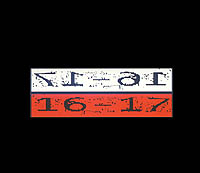
16-17
Savageland Records
16-17 -- 16-17: EARLY RECORDINGS (2-cd reissue) [Savage Land]
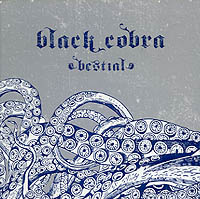
Black Cobra
At A Loss
Black Cobra -- BESTIAL [At A Loss]

Blood and Batteries
Non Existent Recordings
Blood and Batteries -- SALIENT [nonexistent]
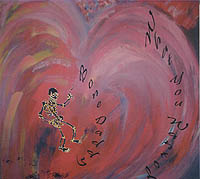
Bonedaddy
Bone Daddy -- WHAT YOU WANTED [Porcupine Records]

Boris
Southern Lord
Boris -- PINK [Southern Lord]
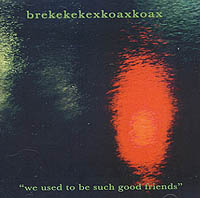
Josh Ronsen
Brekekekexkoaxkoax -- "WE USED TO BE SUCH GOOD FRIENDS" [Hushroom]

Cathedral & Rum
Cathedral & Rum -- AMERICAN GOTHIC [self-released]
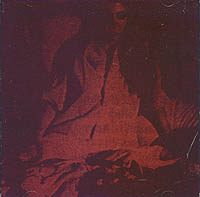
The Cherry Point
Troniks
The Cherry Point -- NIGHT OF THE BLOODY TAPES [Troniks]
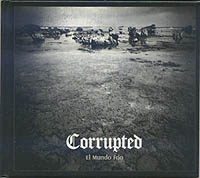
Corrupted
HG Fact
Corrupted -- EL MUNDO FRIO [HG Fact]
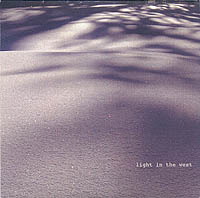
Milton Cross
Milton Cross -- LIGHT IN THE WEST [self-released]
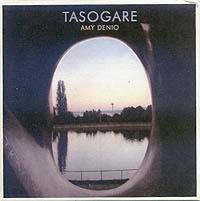
Amy Denio
Public Eyesore
Amy Denio -- TASOGARE [Public Eyesore]
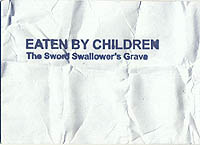
Eaten By Children
State Sanctioned Recordings
Eaten By Children -- THE SWORD SWALLOWER'S GRAVE [State Sanctioned Recordings]
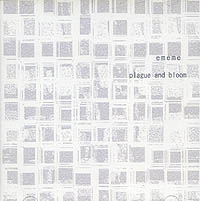
Ememe
Japanoise Records
Ememe -- PLAGUE AND BLOOM [Starry Night Records]
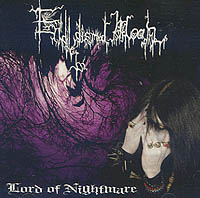
Endless Dismal Moan
Blackmetal.com
Endless Dismal Moan -- LORD OF NIGHTMARE [blackmetal.com]
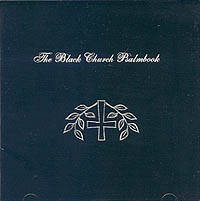
Enochian Crescent
Woodcut Records
Enochian Crescent -- BLACK CHURCH [Woodcut Records]
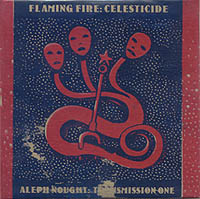
Flaming Fire
Flaming Fire / Aleph Nought -- split cd [Perhaps Transparent]
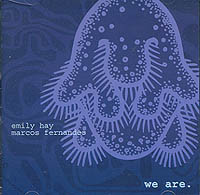
Marcos Fernandes
Emily Hay
Public Eyesore
Emily Hay / Marcos Fernandes -- WE ARE [Public Eyesore]
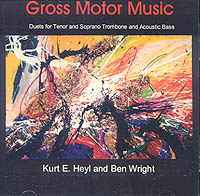
Kurt E. Heyl
Ben Wright
Kurt E. Heyl / Ben Wright -- DUETS.... [Gross Motor Music]
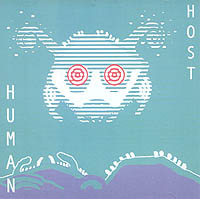
Human Host
MT6
Human Host -- EXPLODING DEMON [MT6]

Letters in Binary
Conspirators in Sound
Letters in Binary -- PRETTY AND PERPENDICULAR [Conspirators in Sound]
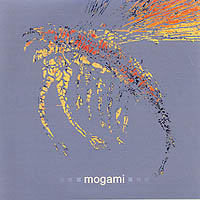
Public Eyesore
Mogami -- S/T [Public Eyesore]
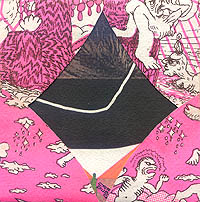
Monotract
Public Eyesore
Monotract -- LIVE IN JAPAN [Public Eyesore]
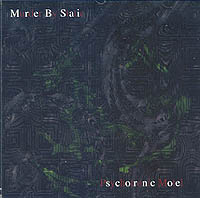
Murder By Static
Deadsix Communications
Murder By Static -- PSYCHOTRONIC MOTEL [Deadsix Communications]
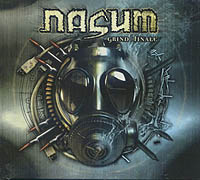
Nasum
Relapse Records
Nasum -- GRIND FINALE [Relapse]
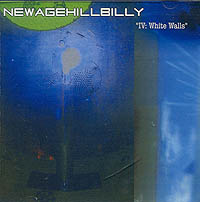
New Age Hillbilly
MT6
New Age Hillbilly -- IV: WHITE WALLS [MT6]

Spring Garden Music
Nom Tom -- S/T [Spring Garden Music]
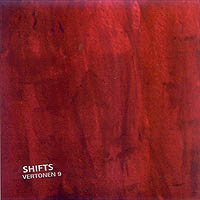
Shifts
Public Eyesore
Shifts -- VERTONEN 9 [Public Eyesore]
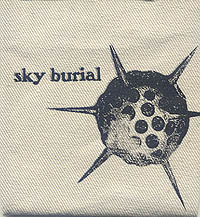
Housepig
Sky Burial -- S/T [Housepig]

Tundra
Tundra -- S/T [self-released]

Housepig
Unicorn -- PLAYING WITH LIGHT [Housepig]
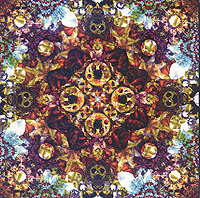
Yellow Swans
The Cherry Point
Troniks
Yellow Swans and the Cherry Point -- CD EP [Troniks]

Experimental Artists
Robert Ziino -- PLASTIC LOVES GLOBAL WARMING [Experimental Artists]